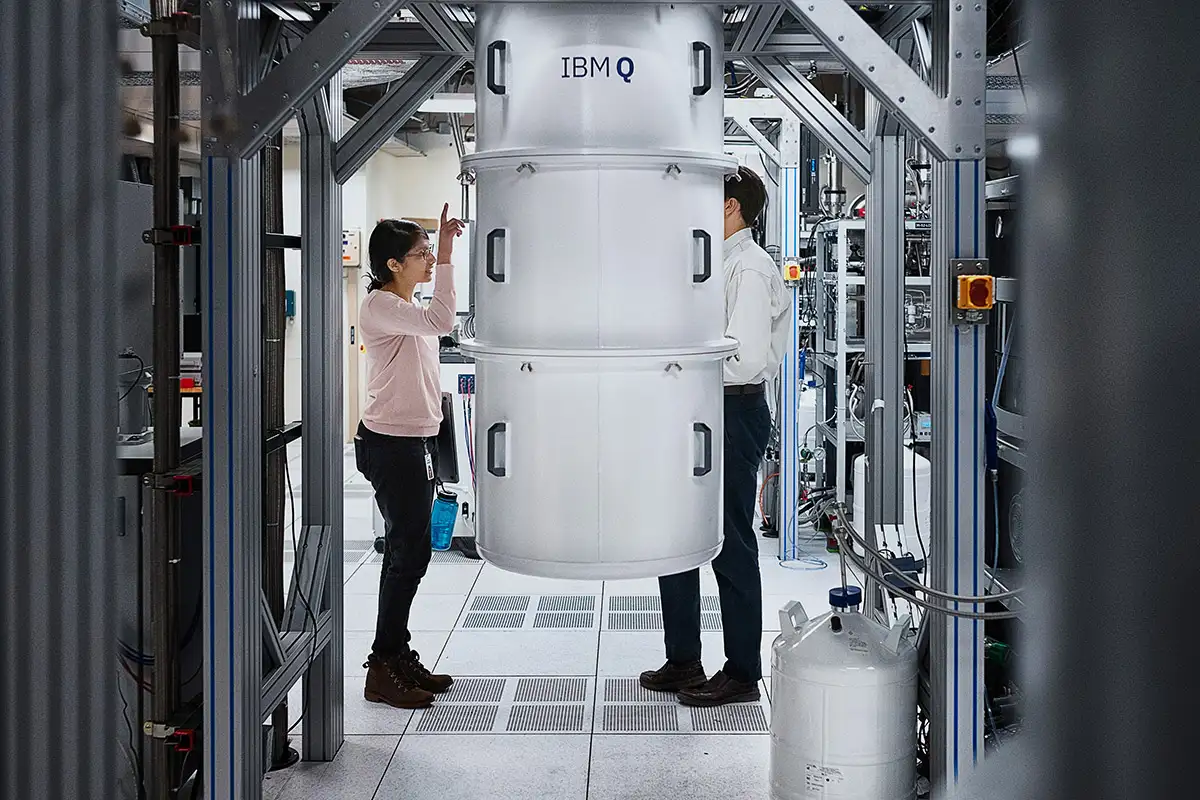Basics of Quantum Computing
The Quantum world is one of many mysteries. This world is governed by laws that don't seem to make any sense, but are proved to be true. What does quantum mean? And how is this connected to computing?
Let's talk about each of these words individually first. Quantum, in layman's terms, means small. The mechanism or working of this subatomic world is governed by the rules of quantum mechanics. Let's understand some principles of quantum mechanics before talking about quantum computing.
The quantum mechanical model of the atom, was the result of two important scientific advancements- Heisenberg's Uncertainty principle, and the dual behavior of matter proposed by de Broglie. To briefly explain these- de Broglie stated that every particle had wave nature, just as waves- like visible light- showed particle behavior. This dual behavior is particularly seen in smaller particles like electrons, and is negligible for larger objects. The uncertainty principle states that, we can't accurately determine both the position and the velocity of the electron at the same time. He determined a mathematical relation for the same. These results directly contradicted the previous models of the atom, and the quantum mechanical model of the atom was devised by Erwin Schrodinger- who came up with his famous Schrödinger's equation.
Source- https://en.universaldenker.org/
To explain it very briefly- the Schrodinger's equation could be solved to give the probability of finding an electron- and we can thus approximate the region in which probability of finding an electron is high. Thus, this new quantum model focuses on probability rather than specificity.
Now how can this abstract concept be used in computing? The fundamental data unit in normal computing system is a bit- which can have a value of 0 or 1. All the data stored in the computer is ultimately formed by these 0s and 1s. In a quantum computing system, the fundamental data unit is called a qubit, 'qu' being short for quantum. How is this different from normal bits? Qubits follow two more mind boggling concepts of quantum mechanics- superposition and entanglement.
There's the popular story of Schrodinger's cat. This hypothetical cat was left in a box and was considered simultaneously alive and dead based on a random subatomic or quantum event that may or may not have occurred. This simultaneous state of being alive and dead is the essence of superposition. The states of a quantum system can't be completely defined. This is utilized in the concept of qubits. Unlike classical computing, which is based on binary digits or bits that can only have a value of 0 or 1, quantum computing relies on quantum bits or qubits, which can have a value of 0, 1, or both at the same time. This allows quantum computers to solve certain problems much faster than classical computers, as the number of possible data combinations and number of superpositions increase exponentially as number of qubits increase. The total superpositions can be given by 2^n for n qubits.
Another concept that is utilized in quantum computing is that of entanglement. When two qubits are entangled together, or joined together, even after they're separated, they end up being connected. Changes in one of the qubits result in change in the other qubit. Hence, after entanglement, their quantum states are not independent of each other. This sounds really absurd, and the in depth study of these concepts is beyond the scope of this article, but this property is used to further boost computational abilities.
Qubits, which are typically implemented using a physical system such as an atom, ion, or superconducting circuit- particles that follow quantum mechanics. In order to perform operations on these qubits, quantum computers use quantum gates, which are analogous to the logic gates used in classical computers. However, because of the peculiarities of quantum mechanics, quantum gates can be much more powerful than their classical counterparts. While standard logic gates are the simple and, or and nor, quantum gates are much more complex, and can do much trickier computations. The actual encoding is a complex process.
The machine is activated by creating the superposition of the qubits. The problem is encoded onto the system by applying the quantum gates discussed above. These complex gates are used to put information into the phases and amplitudes of all the superposition states. What does phase and amplitude mean? Phase and amplitude are terms used to describe waves. The dual behavior of matter is used here. The phase gives all the information of a certain wave. How does the system come to a solution? The concept of interference is used for this. Interference is what happens when two waves interact. If the phases are the same, the amplitude increases. If they are out of phase, with different phases, the amplitudes reduce. Quantum computers use this interference to amplify or increase the correct solutions and to shrink, or reduce the incorrect answers. As you may predict, controlling the qubits is a very challenging process. This all seems bizarre, and to actually understand these concepts thoroughly, would need a dedicated lifetime of practicing this field.
Despite the potential benefits of quantum computing, there are also many challenges that must be overcome before it becomes a practical technology. One of the biggest challenges is error correction, as quantum systems are extremely sensitive to noise and interference. In order to perform complex calculations reliably, quantum computers will need to be able to correct errors in real time, which requires the development of new error correction codes and hardware. Quantum computers run only at temperatures of almost absolute 0, or -273 degrees Celsius.
Another challenge is the need for specialized hardware and software to program and control quantum computers. Unlike classical computers, which can run a wide range of software on standardized hardware, quantum computers require highly specialized equipment and programming languages. This makes it difficult for researchers and developers to experiment with quantum algorithms and applications, and could slow down the pace of progress in the field.
In conclusion, quantum computing is a promising technology that has the potential to revolutionize many areas of science and technology. However, it is still in the early stages of development, and many challenges must be overcome before it becomes a practical technology. Despite these challenges, researchers and developers around the world are working hard to advance the field of quantum computing, and the future looks bright for this exciting and rapidly evolving field.







Comments
Post a Comment